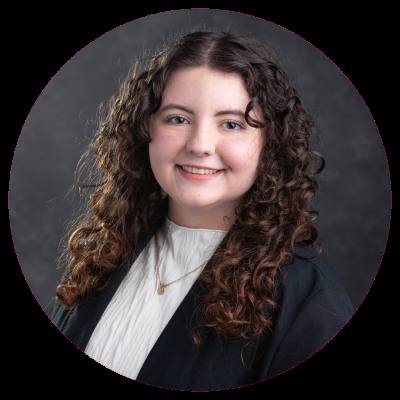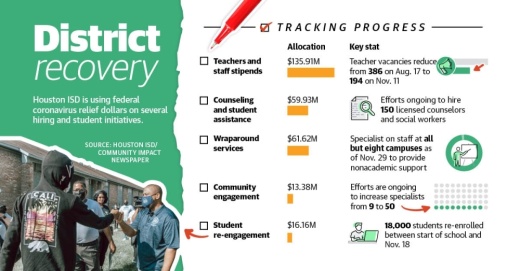New Superintendent Millard House II came on board over the summer at a time when the district faced 386 teacher vacancies and a decrease in student enrollment of roughly 10,000 students that took place during the coronavirus pandemic.
Since then, the district has reduced the number of teacher vacancies to 194 as of Nov. 11. Meanwhile, student enrollment has rebounded back to about 194,500, House said at a Nov. 18 specially called board meeting, close to the enrollment of 197,000 recorded by the Texas Education Agency for the district for the 2020-21 school year.
“My career has prepared me for leading this community right now in this very challenging time,” House said in a statement released reflecting on his first 100 days as superintendent. “But I see these challenges as opportunities, and HISD certainly has so much potential to unlock through these opportunities.”
Although the district has made progress, obstacles remain, including an ongoing teacher shortage that has exacerbated problems caused by the COVID-19 pandemic.
The district is also working to bring more teachers on board, as well as counselors and wraparound specialists, which help students with all nonacademic support services, including connecting them to physical and mental health resources. This initiative will be crucial to HISD’s ability to rebound from the pandemic, but it will take time, said Quincy Boyd, regional director in Harris County for Leadership ISD, a Texas-based nonprofit that works to promote equity in public schools.
“It may be true that there are schools within HISD that need more wraparound specialists than others, and so we just have to make sure that we shift those resources—people, talent, money, technology, books—to make sure that it is equitable for our students,” Boyd said.
Hiring needs
Although HISD faced challenges heading into the year, it also had some help.
The American Rescue Plan Act, passed by the U.S. Congress in March, provided the HISD with $1.16 billion in federal funds through the latest two rounds of the Elementary and Secondary School Emergency Relief program.
Those funds, some of which were distributed this summer, are being directed toward various programs—from facility improvements to investments in fine arts programs—but a large focus was also put on hiring, including teachers, counselors and other specialists.
The district’s plan, outlined in July, involves spending $135.9 million on salary raises and retention stipends, which allowed the district to give a $2,500 stipend this school year to all staff on the teacher pay scale. Another $59.9 million was put into counseling and student assistance, which includes hiring 150 counselors and social workers, according to the plan.
Another $61.6 million will go toward wraparound services. The allocation is enough to ensure each of the district’s 276 schools has its own wraparound specialist, officials said.
“I was really glad to hear that HISD had hired so many wraparound specialists to support those types of connections, where students could have ... a person to go to if they needed help outside of the general academic [needs],” Boyd said.
HISD managed to reduce the number of teacher vacancies from 386 in mid-August to 194 in mid-November, which district officials said is fewer vacancies than before the pandemic.
However, the teacher shortage continues to be an ongoing problem, officials said.
“Special education teachers and licensed counselors were at a shortage nationwide prior to the COVID-19 pandemic, and the impacts of the pandemic have made the ability to source talent even more difficult,” HISD wrote in a statement.
To help the hiring process, HISD has formed partnerships with universities, nonprofits and education networks to help source talent and develop a talent pipeline for the future, officials said.
Continuing to raise HISD salaries has been a hot topic among the district’s board of trustees, which ultimately makes the decision on salaries during the budgeting process each summer. The topic has come up during the board election cycle with four incumbents facing off against challengers in runoffs Dec. 11.
Incumbent Elizabeth Santos, whose District 1 covers parts of the Heights, will face off against challenger Janette Garza Lindner in a runoff. Both candidates have called for teacher salary increases.
In an October candidate forum, Garza Lindner said those increases could be paid for by reallocating some of the budget money allocated to HISD’s central office. Santos—who led the push for a $2,500 pay increase this summer—initially pushed for a $5,000 raise, which other trustees balked at due to the cost.
How to recruit, develop and retain effective teachers will be a priority as the district looks to adopt a strategic plan in March, House said. The plan, still under development, will outline major actions that can be taken over the next five years, he said.
Door-to-door efforts
Another major challenge for HISD at the start of the school year involved re-engaging with students, including students whose attendance was affected by the COVID-19 pandemic.
The effort to bring more than 18,000 HISD students back to the classroom involved the creation of a student re-engagement team, made possible with $16.2 million in ESSER dollars. Since its formation this summer, the team has gone out into communities to meet students where they live and try to get them to re-enroll, House said.
The effort has also included phone banks through a partnership with the American Federation of Teachers; a mail campaign; and partnering with local organizations to connect with students.
Leadership ISD has also worked with HISD to combat equity issues that have arisen during the pandemic. The organization has seen from many students that issues such as not having internet access at home or having to help out their caregivers financially has impacted their ability to succeed and show up in school.
“We know that our students are experiencing so many more things outside of the academic component that schools are there to do, which is to educate,” Boyd said. “There’s also the social and emotional component. There’s also the counseling component. There’s also safety. There [are] so many reasons why students have not returned.”
Angela Koreth, program director of development for partial hospital and intensive outpatient programs at the Menninger Clinic, said the increase in students dropping out of classes during the pandemic can be tied to the amount of time spent out of the physical classroom.
For younger students, the biggest challenges are likely tied to them being outside of a classroom for an extended period, causing separation issues, she said. For older students, readjusting can be difficult due to the lack of orientation and social connection.
The best thing for school districts to do, Koreth said, is to make sure they are checking in with these students.
“If we can have the schools just pause and have those kids just emotionally kind of check in and build a kind of community with their own classmates—that’s been something that’s been helpful,” Koreth said.
Michel Leon, a sophomore at Bellaire High School and member of the HISD Student Congress, said the district was doing a good job of providing more tutoring, both inside and outside the classroom, since the pandemic. Leon also lauded the district's mask policy and efforts to provide masks to students to make sure everyone has one.
However, the return to in-person learning after spending so much time away from the classroom has been challenging for some students, Leon said.
“I know students who are not doing well; counselors have really been a big deal because some students have been feeling like they haven't been getting enough support mentally,” Leon said. "Some schools are really big, and there might not be enough counselors to help every student."
The focus on mental health for HISD should continue to evolve, Leon said, including hiring more counselors, using surveys to check in on students and hosting mental health days at schools.
“It’s just being able to provide that extra help to lift students up wherever you can,” Leon said.






